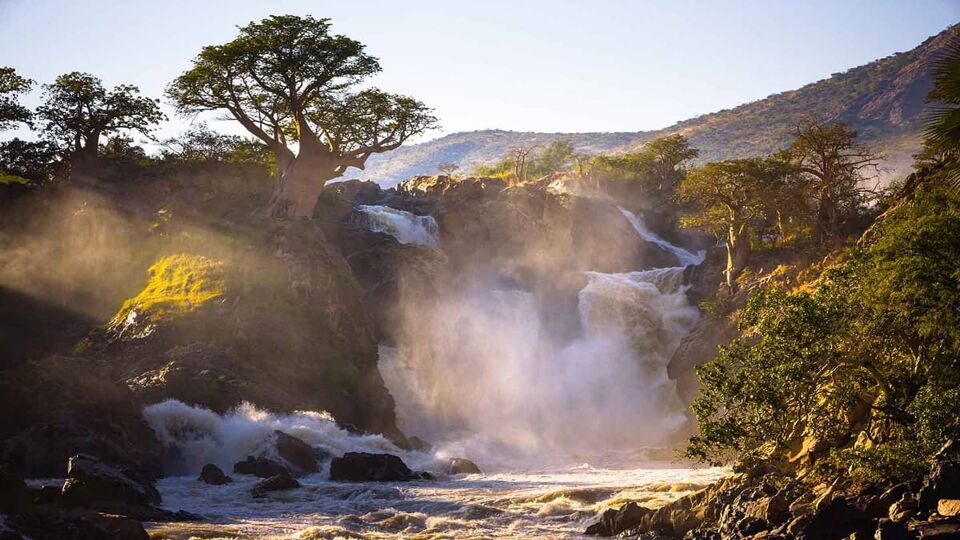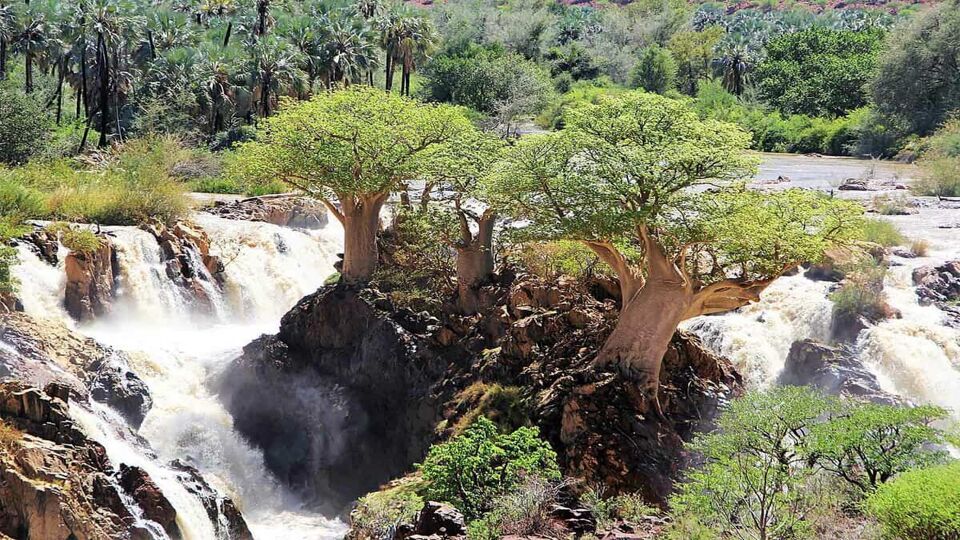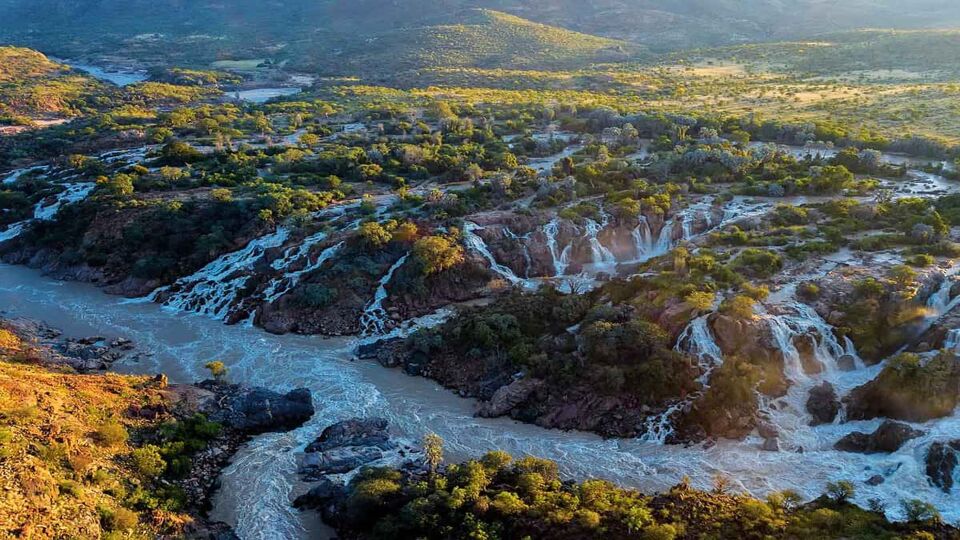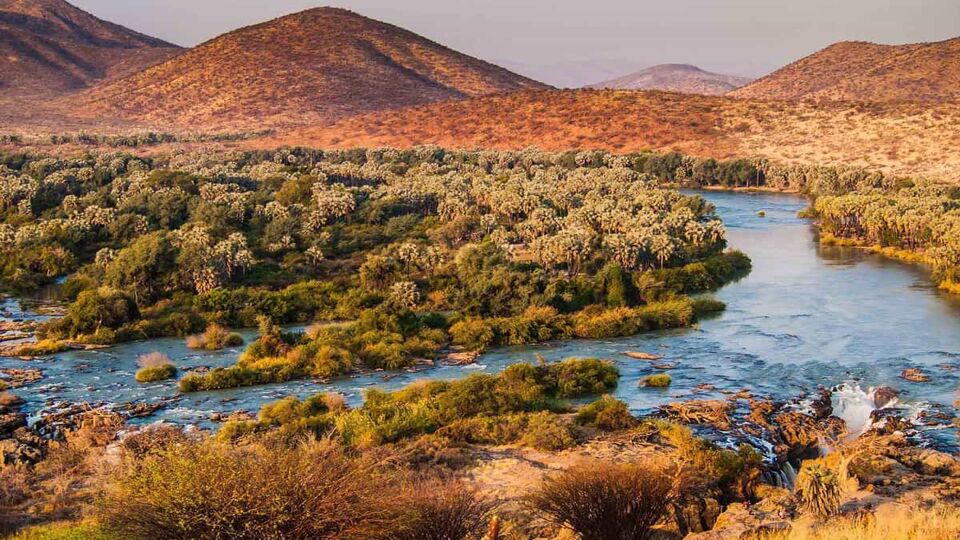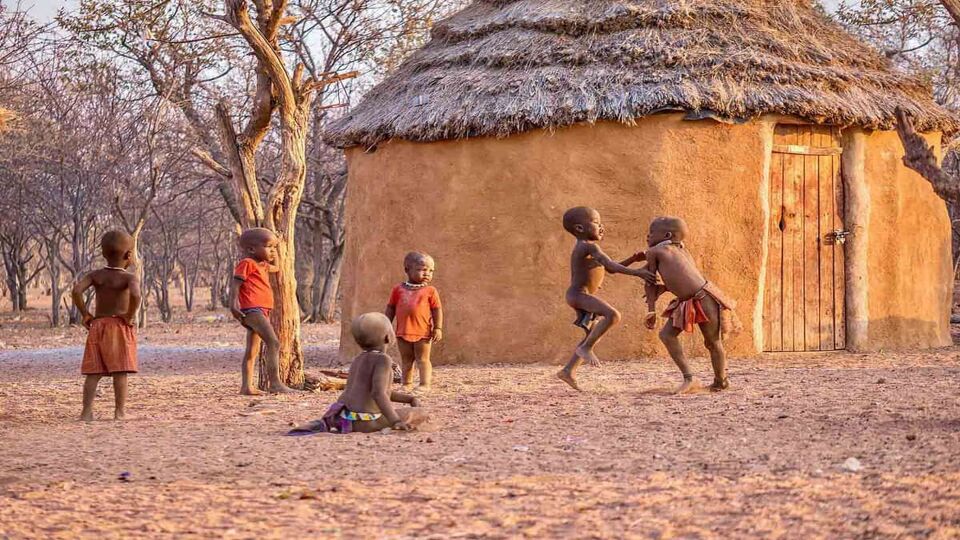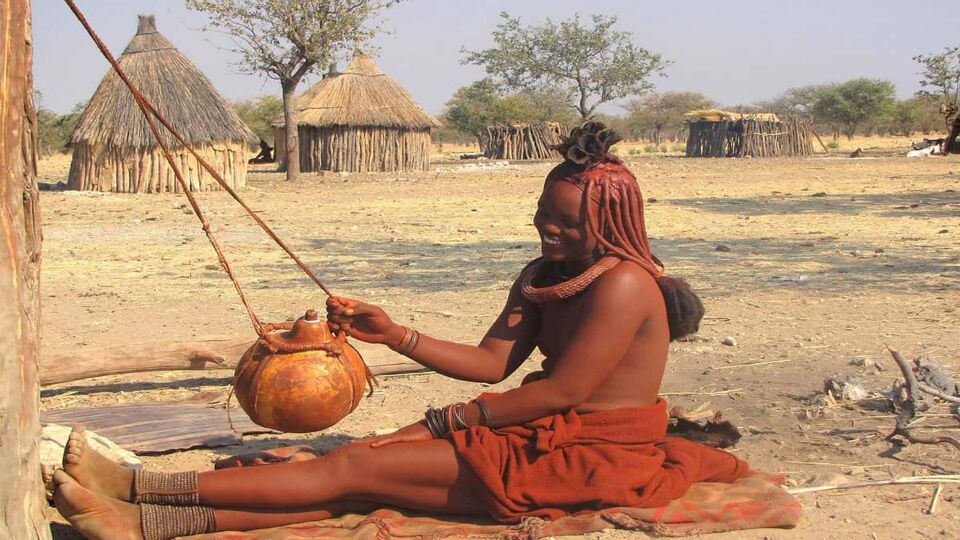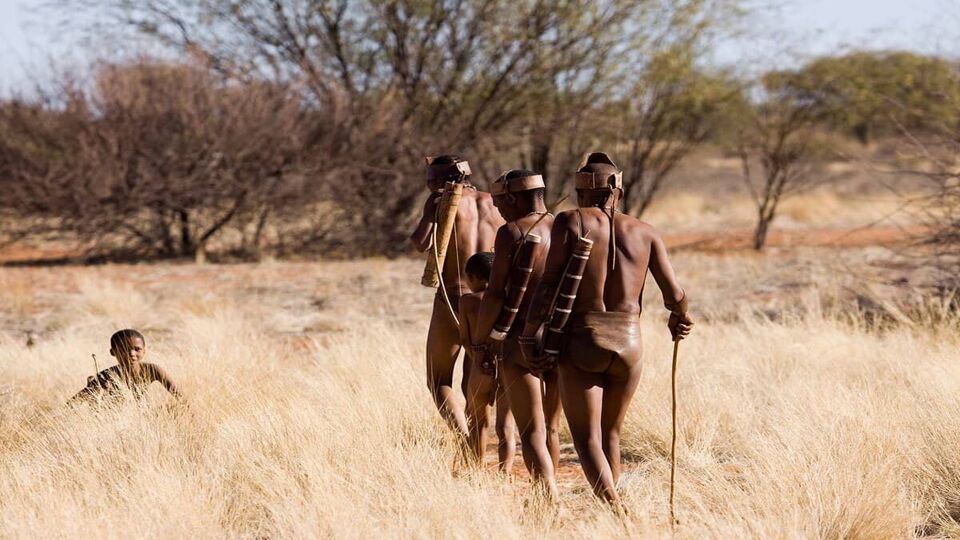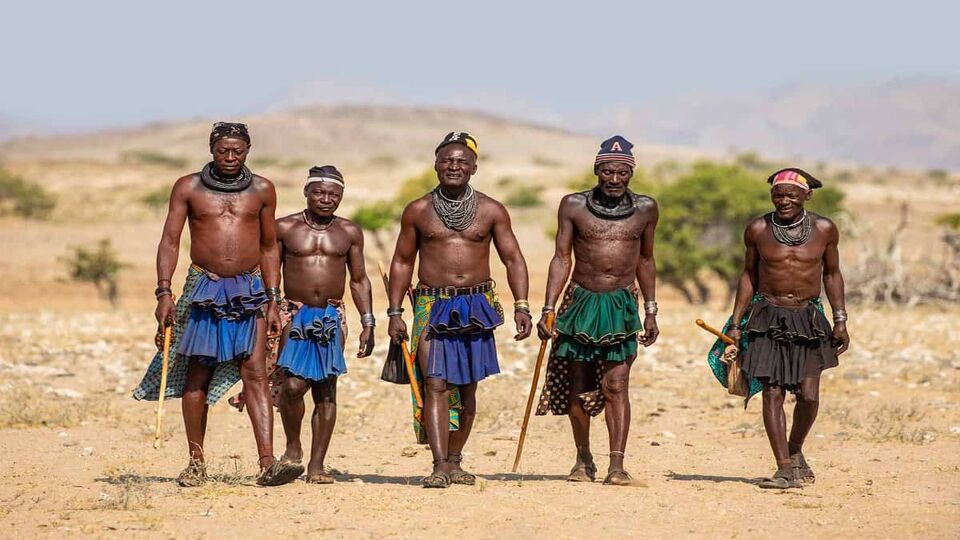
Travel bucket list idea:
Epupa Falls & Himba Tribes
Kunene , Namibia
The remote far-northern regions of Namibia are not easy to access, but reward the tenacious traveller with enigmatic desert landscapes cut through by a splash of green on the banks of the Kunene River, the highlight of which is the Epupa Falls.
In the Herero language of northern Namibia, Epupa translates as ‘falling water’, and the series of glittering cataracts that make up the Epupa Falls – as the Kunene River tumbles some 50-metres through a series of gorges – is certainly a highlight of this remote corner of the country. It’s no Victoria Falls, but what makes the falls a stand-out is their very presence in such a stark and arid landscape.
Lodges nearby can arrange activities on the river, from guided hikes and birding boat trips to seasonal river-rafting and kayaking trips in the high-water season between May and November.
Beyond the river, cultural excursions to meet the region’s Himba people are a further highlight. Famed for their ochre body paint and semi-nomadic lifestyle, a visit to Himba villages offers a unique insight into an ancient way of life

Credit Shutterstock.com/FCG
Logistics
Getting there & doing it
The Epupa Falls are situated 920 kilometres north of Windhoek, a roughly nine-hour drive, so it makes sense to combine a visit with travel to Etosha National Park. Alternatively, a gravel airstrip allows for fly-in charters, which are widely available in Namibia.
Book in for a few nights at one of the handful of local lodges. The Epupa Camp is a long-standing, fairly rustic lodge on the banks of the Kunene River. Epupa Falls Lodge is another comfortable lodge and campsite with a restaurant and deck overlooking the Falls.
Both camps offer guided hikes, nature walks, (gentle) rafting/kayaking on the river, bird-watching river boat tours and trips to visit a local Himba village, all before returning for sundowners by the waterfall.
When to do it
Water levels are highest, and the Falls most dramatic, in April and May after the summer rains. The soft light of morning and late-afternoon are best for photography


